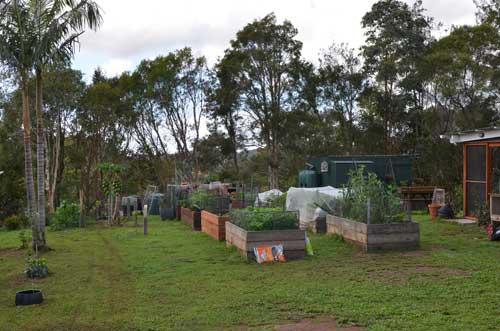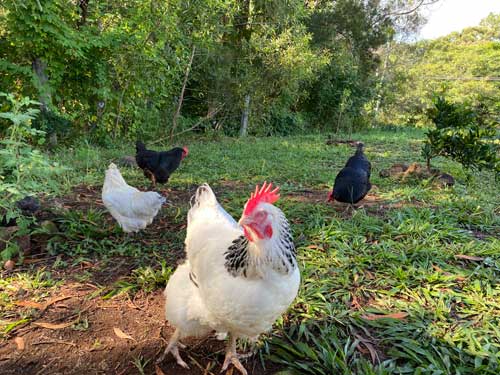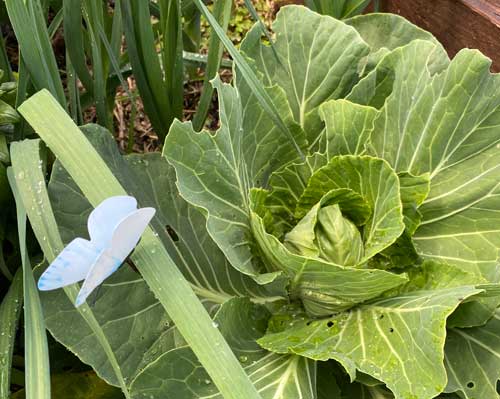Gardening in a sub-tropical paradise
Article and Photos: Sue Pavaris (Canberra Organic – Summer 2020)

Canberra Organic readers may remember me from when I edited the magazine between 2013 and 2016. It was a great privilege — I learnt so much about gardening and made some wonderful friends. When my partner John retired in 2018, we left Canberra and moved to a one-hectare block of land outside Mullumbimby near glorious Byron Bay. It’s so fertile here that even the most novice gardener can get good results. I’d been boasting about this to another COGS member when they suggested I write an article for the magazine … so here it is!
I love garden boxes
When we bought this property there were four garden boxes overgrown with weeds and feral plants. John built another four garden boxes, so we now have eight, which is perfect for rotation gardening and accommodating plants like garlic and potatoes that need a longer growing period. It also enables us to create soil mixes to suit particular plants and the raised sides offer some protection from the chooks.

Chooks are a gardener’s best friend
Chooks can present some challenges in the garden, but they are also a gardener’s best friend. They provide eggs and manure and have an appetite for lots of insects that would otherwise compete with us for the plants. Our Canberra chickens made the long trip up here with us in the back of the car and have adjusted well to living in paradise — although I do think they miss the warm porridge I’d make them on frosty Canberra mornings. John made them a fabulous fox-proof chook pen and they’ve since been joined by four new Araucana chickens. The chooks spend a lot of time roaming around the hectare, eating pests (and plants) and doing healthy things like dust-bathing. Chooks have never forgotten that their ancestors were jungle fowl, so they prefer to graze under trees and shrubs. Trees also give them some protection from predators — we have sea eagles and other large birds of prey here.

Chooks need a good layer’s mash, but also eat most things except citrus and onions. Never give them anything with yeast in it as they aren’t designed to digest yeast and will get sick. Our kitchen waste goes into the rubbish or a mini bin for compost or a mini bin for the chooks — artwork on the containers ensures no confusion.
Trouble in paradise!
Regular rain and warm, humid conditions encourage plant growth but also a plethora of pests and plant problems. Being an organic gardener, I don’t use chemical sprays so it’s been a matter of finding out what works and sacrificing the occasional plant in the name of experimentation.
One of the best solutions has been growing nasturtiums with everything! These vibrant, under-rated plants are edible but also exude a scent that repels many insects. They’ve saved my apple trees, rocket, finger limes and pomegranate.
French marigolds are good too, and I grow tansy with the brambles and with the sweetcorn to prevent cutworm. If the corn does get cutworm it goes to the chooks. I plant flowers to encourage bees and beneficial insects like ladybeetles.
Sometimes covering things is the only option. Despite a home-made fruit-fly trap and a tansy plant the peach tree was under so much attack I had to net it.
Thanks to Gardening Australia I have a collection of home-made sprays to fight mildew and other fungal and bacterial diseases. I’ve only had to resort to a purchased fungicide — registered for organic use of course — to treat anthracnose on the papaya and mango.
And there’s always the pretend white moths to discourage the cabbage moths.

Pudding plants and dragonfruit
Sub-tropical climates suit a massive variety of fruit. The fruit of the black sapote (Diospyros digyna) is called ‘chocolate pudding fruit’ because it truly looks and tastes like chocolate pudding. Our sapote are young but growing with vigour.
You’ll see a dragonfruit (Hylocereus costariocensis) growing up any old hills hoist in this area — all they need is a post! Full of anthocyanin (the rich red colour) dragonfruit makes an attractive addition to a fruit plate.
We have red papaya, passionfruit and pineapples; lychees and a full range of citrus trees, including the wonderful finger lime (Citrus australasica) that does so well in this area.
I’m also growing a vanilla orchid near the back veranda to make it easier to hand-pollinate on the rare occasion when it decides to produce a flower. Wish me luck.
Other exotic fruit we are growing includes blackberry jam fruit (Randia Formosa), jaboticaba (Myrciaria cauliflora), Burdekin plum (Pleiogynium timorense), Davidson plum (Davidsonia jerseyana), rosella (Hibiscus sabdariffa), grumichama (Eugenia brasiliensis) and a Brazilian custard apple (Rollinia deliciosa).
The banana circle experiment
Years ago, I read an article about a permaculture way of growing bananas. Bananas are hungry feeders and need a lot of water, so this seemed like a good solution. You dig a two metre in diameter hole — or get an excavator to do it for you — and mound the soil up on the sides. Then you cover it with carboard, compost and mulch, and cut three holes at spaced intervals on the mound for the bananas. Bananas like well-drained soil and the pit is a good place to throw lawn clippings and garden waste. When you water, the run-off flushes through the composting material providing a rich source of nutrients. You can also plant pawpaws, sweet potatoes and other plants on the mound.
This is a banana-growing region, so you need a biosecurity permit to grow bananas. You get this from the NSW Department of Primary Industries and they will also give you the names of banana growers who can sell you the suckers or corms. I bought two lady finger corms and one cavendish corm from a local grower. The corm is a big rhizome with growing points that eventually pop through the surface. Lady finger take longer than cavendish to appear, but all of our bananas have now put in an appearance. In 18 months time I’ll be climbing up a ladder with the silver ripening bags to bag the bunches. Then we’ll have 100 bananas ripening all at once so it will be time for banana bread, banana cake and bananas with everything!
Bees are next
Northern New South Wales is a big macadamia growing area which means there are a lot of beehives being moved around for pollination. Our neighbour has both European and native bees and the local honey is exceptional. Bees will be the next addition to our garden. I’ve done the workshop, researched hives and just need to get it all set up and get the bees. We’ve been planting bee-friendly plants, so they’ll have plenty of food.
We also have plenty of home-grown food — in fact so much that we give it away to our neighbours and friends. I never think of garden work as ‘work’. It’s sheer pleasure to be out with the chooks getting my hands in the dirt. But COGS readers already know how enjoyable gardening is, so I guess I’m preaching to the converted.
